#How has it taken me this long to realise that their names are phonetic
Text
The Range in Spades.
By Peter Craven.
As with everyone, My Fair Lady is an ancient memory for Charles Edwards, who seems to oscillate from the Rex Harrison repertoire to Shakespeare – Noël Coward’s Blithe Spirit with Angela Lansbury in the West End and America, but also Oberon to Judi Dench’s Titania, directed by Peter Hall.
“I was fascinated by it as a child,” he says. “The LP of the original with Rex and Julie [Andrews] I found – I can’t remember how old I would have been, but quite little – but I remember being really fascinated by the wit, even at that stage. I knew it was very clever and very sharp and very English, particularly the way Rex did it.”
Edwards is the new Henry Higgins in Julie Andrews’ production of My Fair Lady. It’s the Hamlet of high-comedy roles and arguably the greatest of all musicals. So what does he do with Higgins’ sprechgesang? Does he follow the notes or does he do what Rex Harrison did on Broadway in 1956, opposite Andrews’ Eliza Doolittle, hitting a note every so often but speaking his way through?
“I follow that,” Edwards says, of the latter. “I personally find if you follow the notes in Higgins’ songs, what is revealed to you is that they’re not nearly as much fun. They actually become rather leaden. And what you need with those songs is great lightness and dexterity.
“I’d been playing around with doing it slightly off the beat, trying to maybe be a little bit clever with it. But Guy Simpson, our brilliant musical director, says it’s much better if you can speak as much as you like but just stick to the beat. It’s more real, there’s more of the character. Higgins knows what he’s saying, he doesn’t have to dither either side of the beat.” Frederick Loewe, after all, wrote it for Harrison, knowing he couldn’t sing. “I think that’s perhaps why if you try to sing more than one should it’s less interesting because it is written for the man who was going to do it like that.”
Michael Redgrave famously refused the role of Higgins because it meant committing to a long run. How does Edwards feel about a longish stretch of phonetics and feminist musical comedy? “Oh, I could do it for a while,” he says. “I arrived, performed it in Brisbane, and now I’m rehearsing it in a way… for my own satisfaction. Something which would happen in four or six weeks of rehearsal is now happening to me, internally, just myself, finding my way. I feel like I’m still starting out even though the performance is there. I could do it for a bit longer because there is a lot more to explore.”
I tell him I’ve just watched the recording of him playing Benedick in Much Ado About Nothing – the one role Harrison recorded for Caedmon, which is largely in prose and the Bard’s most Shavian play. “It was really fun,” Edwards says of his stint opposite Eve Best at the Globe in the role with a family resemblance to Higgins. “Julie [Andrews] likes comparing Shaw as the natural successor to Shakespeare in terms of that kind of comedy. I’m very drawn to both of these roles. That was a joy to do.” He adds that he learnt something from the Globe, because it’s rougher, more extroverted theatre. “If it’s done with wit,” he says, “it can be a great crowd-pleaser, without being naff. And I think it has informed my work to such an extent that often since I’ve been told, ‘Just calm down, Charles.’ ”
When I tell him he was very good as the Tory whip in This House, the parliamentary play by James Graham, done by the National Theatre, he says of the author, “I don’t know how old he is, he’s something annoying like… he’s probably hit 30. I hope he has.” But he adds that at 47 himself he’s probably a bit younger than the received image of Higgins from the film of My Fair Lady, even though Shaw describes him as a pleasant-looking man of 40. It must be odd to inhabit a role with such a powerful acting ghost in the background.
I once saw Harrison – very, very old – at an airport sweeping past in what looked exactly like the hat and coat he – and Edwards – wears in the opening scene of My Fair Lady in Covent Garden. “There’s a lot, I’m sure, in the production we’ve inherited that he insisted on,” Edwards says. “I’m sure that will be true of the hat … And here we are now, probably wearing the very weave he ordered from a particular tailor.”
Of course, everyone likes the cut of Higgins’ cloth and would like to make it their own. George Clooney, of all people, is said to have had an eye on the role when Emma Thompson wanted to make a new film of it with Carey Mulligan as Eliza. And with the old George Cukor film, Alan Jay Lerner, treacherously, wanted Peter O’Toole, still in his 30s, rather than Harrison. Like O’Toole, Edwards does both ends of the acting spectrum: the light-as-air prose comedy of Shaw and the poetic majesties of Shakespeare. He worked with Peter Hall, the founder of the Royal Shakespeare Company.
“I’ve done quite a lot with him,” he says. “I think I auditioned one year when he used to run the season at Bath and he took a shine and kept wanting me back to do this and that.” His work with Hall included another Much Ado, where he played Don Pedro. “He got it into his head,” Edwards says, “that Don Pedro at the end was like Malvolio or Antonio, the man who gets left alone.” So Edwards’ Don was a bit in love with Claudio and something of “a real devil”.
His Oberon to Dench’s Titania in A Midsummer Night’s Dream came from another of Hall’s bright ideas. “Peter put it to me, ‘Look, I’ve got this idea, it’s like Elizabeth and Essex…’ They did a prelude to the evening where the players were assembling to put on a play for Elizabeth I and then Elizabeth/Judi arrives and selects me.” He says that Dench, like Andrews, is great to be with and “just as nervous and scared as the rest of us all are. They’re very great company people; their fun is being in the company.” This was the second time he’d worked with Dench because he’d been her fancy man, Sandy, when she played Judith Bliss in Coward’s classic comedy Hay Fever. He loves the lightness of My Fair Lady and the way it can modulate into the gravity of “I’ve Grown Accustomed to her Face”, with its utterly moody interplay between hilarities of exasperation, and something else, something at the edge of heartbreak.
Of course, acting careers have their light and dark. Harrison, high comedian though he was, did Preston Sturges’s Unfaithfully Yours, that demon study of jealousy. Marcello Mastroianni, in many ways his European equivalent, made some of the more serious masterpieces, everything from 8 ½ to La Notte. And Edwards went straight from acting with Olivia Williams in Harley Granville Barker’s Waste to doing a chocolate-box soap TV drama, The Halcyon, with her. He says Granville Barker stands up very well when you prune him back and you know he thinks this of Shaw, too – the way “The Rain in Spain” crystallises something Shaw takes for granted and talks around – and does so operatically. “I find it very touching, that bit,” Edwards says. “It’s wonderful to do.”
And he’s at pains to defend Higgins, the man who – at Harrison’s insistence – was given another Act II number, “A Hymn to Him”. “He’s not a snob,” Edwards says. “He’s trying to remove the social gaps. He’s trying to erase them, in a rather perverse way by wanting everyone to speak the same and dismiss regional accents – but he’s not a snob. He’s an egalitarian.”
It’s always a fascinating thing to listen to an actor let his mind roam about the ins and outs, the winding staircase of his career. Charles Edwards went to a preparatory school named Amesbury in Surrey, which he says was “pure Decline and Fall, full of eccentrics, some of them quite dangerous eccentrics”. His salvation was Hamlet. “I was invited by – you know, we all have these teachers who encourage us – his name is Simon Elliot and he’ll still come and see me in shows now. ‘I’d like to talk to you about Hamlet,’ he said. ‘Oh yeah?’ ”
From there, a career. Here he is on Angela Lansbury: “She is in every way fit. In Blithe Spirit she did this extraordinary dance with these jerky movements as she was preparing for a séance. I don’t know what it was but I know every night she loved doing it and changing it.” And on Maria Aitken, brilliant as the wife of John Cleese’s Archie in A Fish Called Wanda, who directed Edwards in The 39 Steps: “With comedy she immediately knows, ‘That’s what I want for this show.’ And that it has to be taken very seriously. She’s the person you need at the centre, taking it absolutely seriously.” She insisted that Edwards – who was the production’s original Hannay in The 39 Steps – had to play the role when it transferred to Broadway. “She was lovely. She fought for me and she said, ‘You need the Englishman. You need the backbone.’ And they brought me over even though the rest of the cast was two Americans and one Canadian. It was great, I was thrilled. But it’s the kind of humour that can tip. It’s got to be tasteful, it’s got to have taste. Taste is the key with humour that involves an audience.”
All of which brings us round to the ending of My Fair Lady where Eliza comes back to Higgins. She has sung that she can do “Without You”. “Absolutely,” he says, “and this is heightened by the ending, the fact that some people would ask why does she come back to him. But there has to be a meeting of minds, a meeting of souls, and that’s what he realises right at the end. She comes back to show him that she has to be there, but she is in charge. And he sees that and accepts that. And all of that we try to do in three seconds of the show.”
Edwards laughs.
So what is it like to work with Julie Andrews as she re-creates the original production of My Fair Lady by the legendary Moss Hart? “It was a real treat, it’s an extraordinary thing and very touching to see her remembering it,” Edwards says.
Obviously the production is a blueprint, which he had to fit himself to, but the man who is best known here for his stint in Downton Abbey adds, “But you have to imbue it with a new texture.”.
Taken from The Saturday Paper, published Jul 15, 2017.
6 notes
·
View notes
Text
Dumyat sunrise - a big wee hill
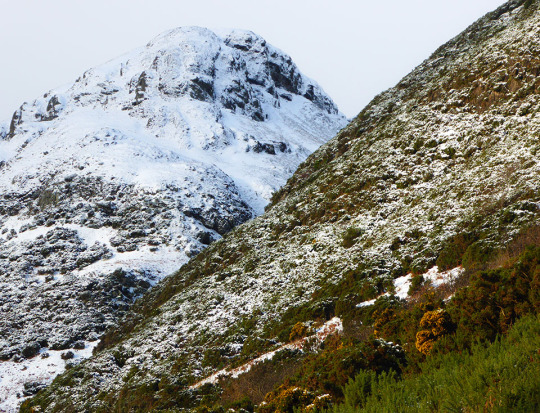
It’s difficult being English in Scotland, but not for the reasons you might think. I’ll put it on record now that in the 14 years since I moved north I have experienced nothing but generosity and friendliness from my adopted countrymen. Scotland has been welcoming and has invited as much or as little naturalisation as I felt comfortable with. This is my home now, if it’s not too corny to say so it is where my soul fits best. I know this where I belong. And yet in those early years, try as I might the one thing that repeatedly hindered my willing naturalisation were the place names and language.
Dumyat, a rocky knoll overlooking Stirling was my first serious linguistic obstacle and the hill that made me realise it would take a while to settle in to my new home. For the first few months I didn’t really know anyone locally, and certainly didn’t know any hillwalking type folk, so I merrily hiked my way around the munros in blissful ignorance of the correct way of saying things. But then one day I found myself in the company of an Edinburgh local who had been climbing hills all his life.
‘Where are you off to this weekend’, he asked.
‘Ben Ledi I think’, which was said correctly as ‘Leddy’. There wasn’t really much room for error there.
‘But’ I continued...’that probably won’t take all day though, so I think I’ll stop at Dum Yat on the way home’.
‘Where?’
‘Dum YAT. It’s a small hill near Stirling’.
Cue much laughter and ridicule.
‘It’s not Dum YAT, you arse, it’s ‘Dum-EYE-at’.
‘Well how was I supposed to know!?’ I protested.
Bear in mind we didn’t have the wealth of easily accessible information back in those dusty olden days. There wasn’t YouTube. There was barely internet. I mostly relied on books, and they didn’t write hill names out phonetically because they were written for a local audience who already knew how to pronounce these things.
After that I think I pretty much shied away from pronouncing anything in public. Over time it got easier of course, not least because websites started springing up that actually spoke these names aloud to you. True, some contradicted one another, but at least it gave you something to work with. And so I continued my walking around Scotland, thereafter relishing rather than fearing place names as every new encounter only broadened my experience of the culture and the landscape.
But I never again returned to Dumyat. That wasn’t a conscious decision on my part, I just never thought about returning. Now though, it amuses me to think that I have perhaps had a subconscious coping mechanism that has steered me clear of that inoffensive wee lump, lest it dig up traumatic memories. Did I have Dum Yat demons to banish? But then in mid January this year the weather gods heaped the lion’s share of limited snowfall onto Stirling and Dunblane. I of course am attracted to wherever the snow lies deepest and so at 8am, nearly 14 years after my first and only visit I found myself in Blairlogie, at the foot of Dumyat.
Dumyat is small really. At a mere 418m it is even smaller than my local hill, East Lomond, and with a handy car park at around 200m altitude its modest summit can be attained relatively easily and in quick time. But approaching from that point, from the high road to the west, denies you the drama of the sheer escarpment to the south.....hence my approach from the Blairlogie car park just outside Menstrie.
I’d not taken this route before but I thought it would be a good choice to see the sunrise across the Forth Valley. And indeed it was!
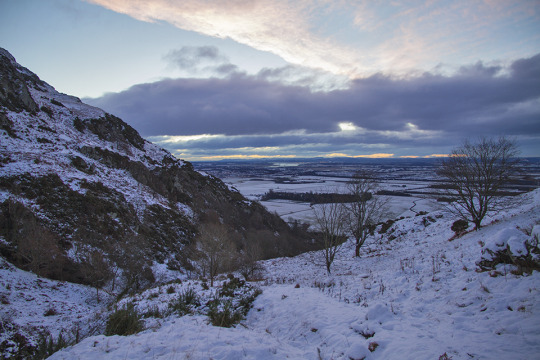
I was gaining height quickly and was already high up on the hill before the first blinding rays of light heralded the dawn. As has been the case most of these past few months, it was clear that the best of the sunrise would pass very quickly owing to the small gap between the horizon and the low cloud hugging the landscape. But even though I was expecting it to be fleeting, the speed with which it passed caught me off guard.
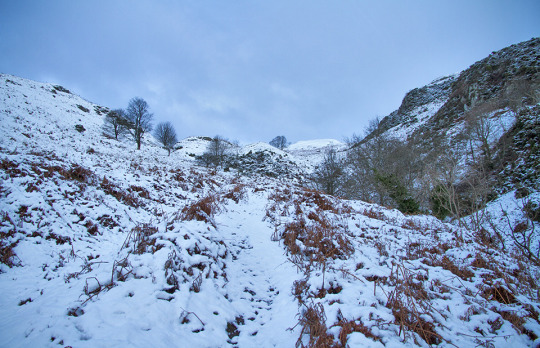
Glancing west, the hills were suddenly burning pink with the glorious alpenglow, but I wasn’t in a good vantage point to get the best view. A large crag was in my way. By the time I hurried 100m or so up the hill to get into a better position the pink was already fading. The below photo, showing the Wallace Monument and Stirling Castle behind it looks vivid but it’s nothing compared to what it was just 20 seconds earlier. It’s incredible how brief these spectacular moments can be.

Never the less, I was chuffed. It’s all very well forming a plan in your head about where you plan to be at a given time and imagining what you are going to see, but all manner of variables outwith your control can scupper your efforts. It’s immensely satisfying when it all works out, even if it is for only two minutes. But truth be told it’s difficult to be disappointed by the views on offer at Dumyat. Though small, its location at the end of the Ochils and immediately overlooking the remarkable Ochil fault that rises sheer from the flat plains below, means it has one of the finest views in all of Scotland. Industrial and urban perhaps, but given that most of the Scottish population lives in this narrow ribbon of land between the topographical highlands and the southern uplands, it’s a view most of us can relate to in some way.
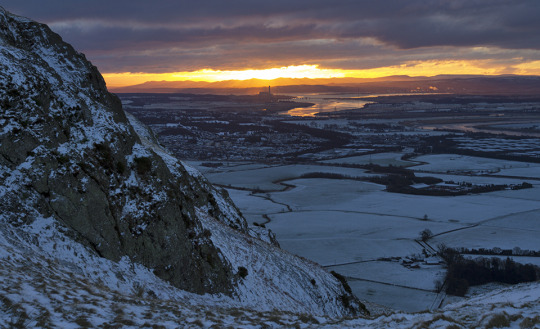
Though the alpenglow had gone, the view out across the Forth Valley was spectacular. The outline of the Pentland Hills, on the other side of the Forth, was aflame.

Looking farther east the low light cast familiar landmarks in stark relief: Arthur’s Seat, Edinburgh Castle and the cranes atop the new Queensferry Crossing. And in the foreground the landscape got progressively snowier to the west.

While the view south is industrial, the views west and north are anything but. Capped with snow and the first to catch the morning light, the southern highlands, with Ben Lomond lording it over the flatter parts of Stirling:

By this point I’d veered away from joining the main path that runs east from the high road to the summit, instead relishing the snaking sheep tracks that wound their way under the imposing crags.
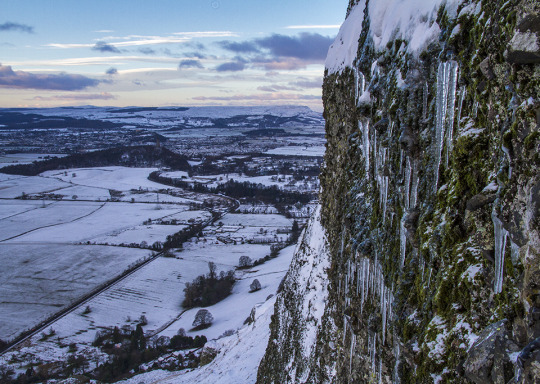
The snow was deeper here too, scoured from higher ground by the wind and deposited in deep but soft drifts. It took a while to negotiate my way past the crags but eventually I crested a rise and found myself at the summit of Castle Law - a 374m subsidiary top of Dumyat and which offers a more tantalising view of the Ochil fault.

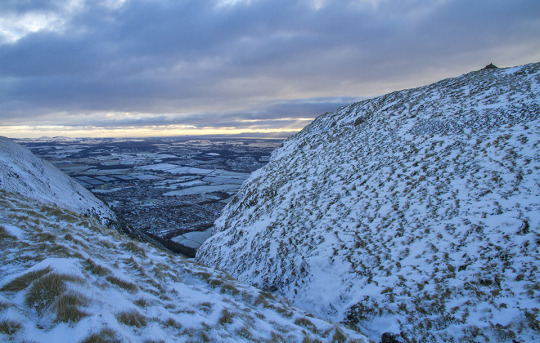
Away and to my left, I could make out the summit trig point on Dumyat, which presented a craggy aspect to be negotiated.
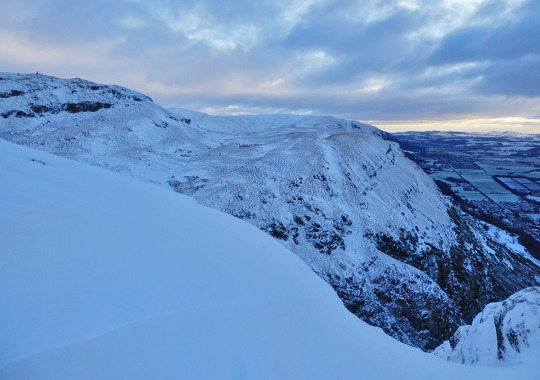
There was no sign of anyone. There were no footprints.
I headed north, away from Castle Law and waded through the intermittently deep snow that had accumulated on any southern aspects.
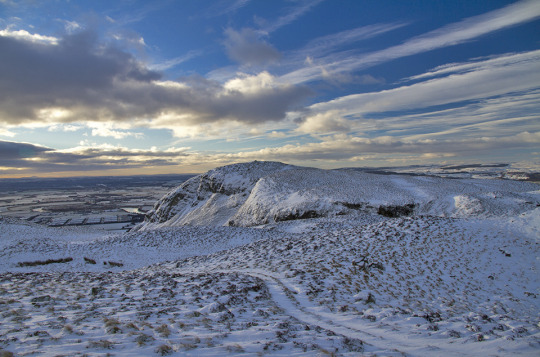
An hour had passed since sunrise, and the sun was now starting to peek over the low cloud for the first time. Though it was early and cold, not far off the shortest day of the year, I could feel the sun’s warmth through my jacket.

Pressing on, I weaved my way up through the crags under steadily bluer skies:

A fell runner sauntered along the ridge line as I approached, but she was long gone by the time I reached the final approach to the summit:

And then there I was, atop this wee hill but with a view that was anything but!


I’d taken such a convoluted route to the summit and with so many stops for photographs that it had taken me well over two hours to get here from Blairlogie. But the journey itself was every bit the equal of the summit reward, although weirdly I had absolutely no recollection of the massive beacon full of stones that topped the summit. It made for a wonderfully photogenic subject though!
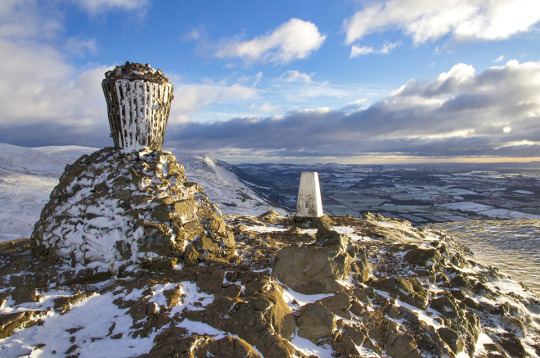
Away to the west, other outdoorsy folk were valiantly making their way up through the snow:

Back at the summit, with a keen wind it was savagely cold so I didn’t hang about, and instead started making my way down the sun-kissed slopes.

I chose a different descent route from the one I used to ascend, which took me east into Menstrie Glen:

It was an easy and quick descent in the snow, and before long I was on the high level path that skirts around the southern flanks of Dumyat and takes you back to Blairlogie. The contouring path offered great views back up the craggy summit:
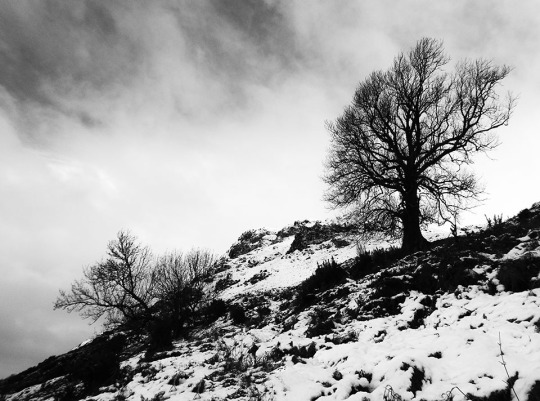
And wonderful views across to the Wallace Monument:

Perhaps even more impressive, however, was the massive craggy face of Castle Law, the outlying notch on which I’d stood not 90 minutes earlier. In its winter garb and with little to judge scale, it looked positively highland in stature.
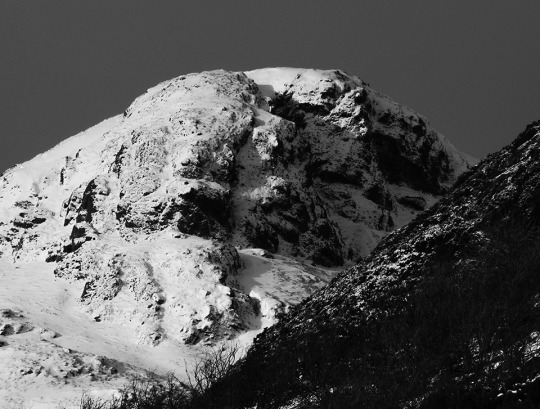
Farther along the path and with little distance to go, the lower hillside was festooned with bright yellow gorse. It flowers all year if given the chance by a mild winter, and its gaudy colour made a nice contrast set against the monochrome winter world above. A confused image to reflect a confused winter, weather-wise.
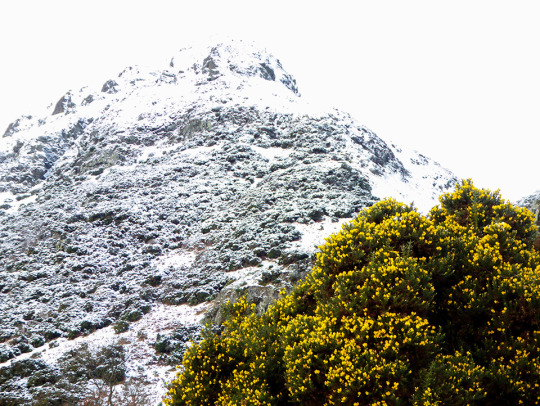
I was back at the car before lunch. The snow in and around the car park at the lower levels had already melted, so it felt good to have made the best of the stable cold conditions. I made my way back to Fife but before I left I made a point of driving a little way south so that I could get a full view back at the hill I’d just climbed. You can see Castle Law on the left, Dumyat on the right, both rising sheer in improbably fashion from the pancake below. It made for a fitting final view of what is a very big wee hill indeed!

The walk actually put me on a high that lasted a good week or so, but I also resolved to return whenever the next lasting snowfall arrives in the lowlands and a clear morning is forecast. That view of Stirling with the alpenglow burning bright is one I definitely want to see again, and I think I can safely say that my new-found enthusiasm for big wee Dum-eye-at means that any subconscious coping mechanism I may have had is no longer needed. Demons banished, I think my smile says it all :)

If you’re interested in the insane time-consuming route I took, here it is:

18 notes
·
View notes